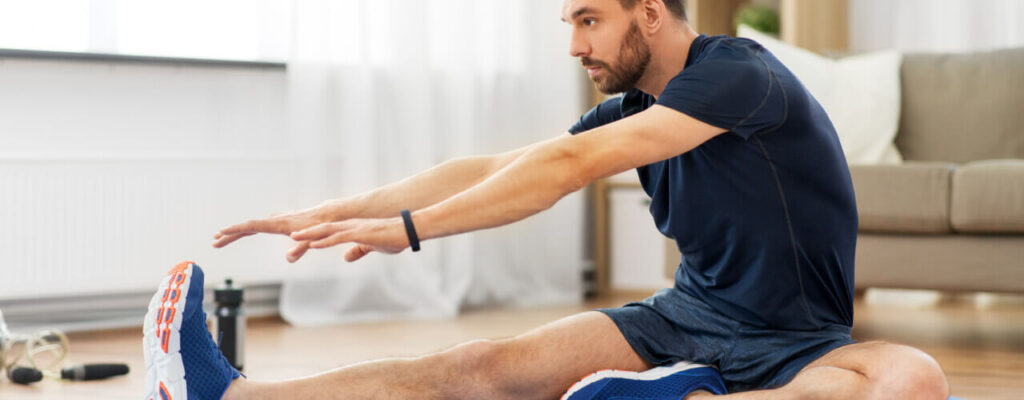
The Science of Stretching: Why Flexibility Matters More After 50
Flexibility is a key component of overall health, yet it often goes overlooked—especially as we age. After 50, maintaining and improving flexibility becomes essential for preventing injury, reducing joint pain, and improving overall mobility. The science of stretching highlights its profound impact on muscle health, posture, and functional independence. Whether you're already active or just starting your fitness journey, understanding the importance of stretching can significantly enhance your quality of life.
In this article, we’ll explore the science behind stretching, why flexibility matters more after 50, and actionable tips to incorporate stretching into your daily routine.
The Importance of Flexibility After 50
1. Reduced Risk of Injury
Aging naturally reduces muscle elasticity and joint mobility, making individuals over 50 more susceptible to strains and injuries. Stretching helps maintain muscle pliability and enhances the range of motion, lowering the likelihood of injuries during everyday activities or exercise.
2. Improved Posture and Balance
Tight muscles can pull your body out of alignment, leading to poor posture and increased fall risk. Regular stretching keeps your muscles balanced, supports better posture, and strengthens stabilizing muscles crucial for balance.
3. Enhanced Blood Flow
Stretching promotes blood circulation to the muscles and joints, delivering oxygen and nutrients while removing waste products. Improved circulation can alleviate stiffness and inflammation, common complaints as we age.
4. Pain Relief for Chronic Conditions
Stretching has been shown to alleviate symptoms of chronic conditions such as arthritis and lower back pain. It eases tension, reduces stiffness, and improves overall joint functionality.
The Science of Stretching
1. Types of Stretching
- Dynamic Stretching: Involves active movements that prepare the muscles for exercise, such as leg swings or arm circles.
- Static Stretching: Involves holding a stretch for 15–30 seconds to improve flexibility. This is ideal post-workout or as part of a daily routine.
- PNF Stretching (Proprioceptive Neuromuscular Facilitation): Combines muscle contraction and stretching for more advanced flexibility training.
2. How Stretching Works
Stretching elongates muscle fibers and connective tissues, improving their flexibility and range of motion. It also activates mechanoreceptors, signaling the brain to relax tight muscles.
3. The Role of Fascia
Fascia is the connective tissue surrounding muscles and organs. Over time, fascia can become tight or stiff. Regular stretching helps release fascia, improving mobility and reducing tension.
Stretching Routines for Those Over 50
Daily Stretching Recommendations
- Morning Stretches: Start your day with gentle stretches to warm up muscles and joints.
- Pre-Workout Stretches: Use dynamic stretches to prepare your body for exercise.
- Post-Workout Stretches: End your session with static stretches to prevent soreness and enhance flexibility.
Essential Stretches for Flexibility
1. Hamstring Stretch
Improves flexibility in the lower back and legs.
- Sit on the floor, extend one leg, and reach toward your toes. Hold for 20–30 seconds.
2. Cat-Cow Stretch
Enhances spinal flexibility and reduces lower back tension.
- On all fours, alternate between arching your back (Cow) and rounding it (Cat).
3. Shoulder Stretch
Relieves tension in the upper back and shoulders.
- Cross one arm over your chest, using the opposite hand to press it closer.
4. Hip Flexor Stretch
Improves hip mobility and reduces lower back strain.
- In a lunge position, push your hips forward and hold.
Tips for Safe and Effective Stretching
- Warm Up First: Stretching cold muscles can increase the risk of injury. Always warm up with light activity before stretching.
- Don’t Overstretch: Stretch only to the point of mild tension, not pain.
- Breathe Deeply: Deep breathing helps relax muscles and enhances the stretch.
- Be Consistent: Stretching once won’t make a difference; aim for at least 10–15 minutes daily.
- Focus on Problem Areas: Pay extra attention to areas prone to stiffness, such as the hips, hamstrings, and lower back.
Why Flexibility Matters More After 50
Flexibility is not just about touching your toes; it’s about maintaining independence, mobility, and quality of life. As we age, daily activities such as bending, reaching, and even walking can become challenging without proper flexibility. Stretching regularly can:
- Reduce joint stiffness.
- Improve range of motion.
- Boost energy levels by reducing tension.
- Enhance overall physical performance, whether in sports or daily tasks.
FAQs About Stretching After 50
Q: How often should I stretch?
A: Aim for at least 3–5 times per week, but daily stretching is ideal for optimal results.
Q: Can I stretch if I have arthritis?
A: Yes, but focus on gentle stretches and consult your doctor or physical therapist for guidance.
Q: Is yoga good for flexibility?
A: Absolutely. Yoga combines stretching, strength, and balance, making it an excellent choice for improving flexibility after 50.
The science of stretching emphasizes its critical role in maintaining mobility and preventing pain, especially after 50. By incorporating daily stretching routines and focusing on proper techniques, you can improve your flexibility, enhance your posture, and reduce the risk of injuries. Remember, flexibility is the foundation of a healthy, active lifestyle—no matter your age.

Leave a comment